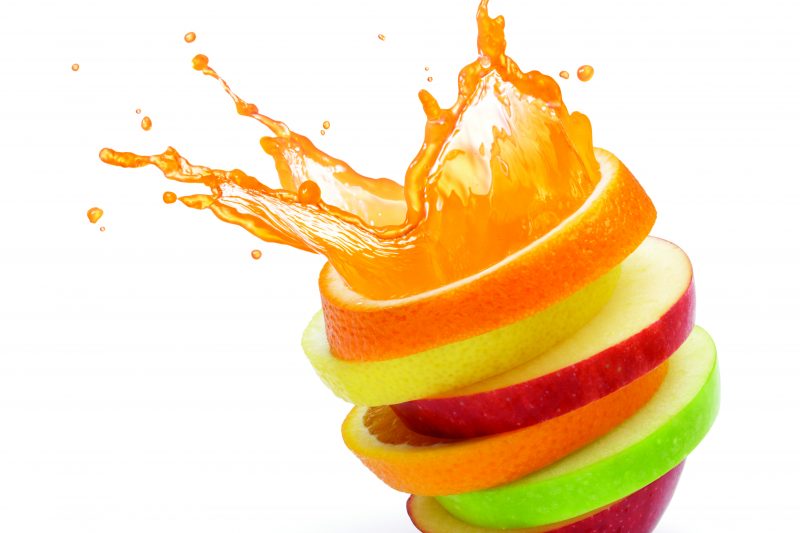Good taste

Jonathan Thomas, principal market analyst at Leatherhead Food Research, discusses the role of flavours in confectionery and snacks.
The flavours sector represents one of the largest within the global market for food additives. The use of flavouring compounds is widespread throughout the global food and drinks industry as manufacturers continue to search for new taste experiences to attract consumers. The confectionery and snack foods industry represents one major end-user application for flavours, although usage levels are thought to be less significant than in other sectors such as soft drinks and dairy foods.
The global market
According to data from Leatherhead Food Research, the global market for flavours and fragrances was worth US$22bn (€16bn) in 2012, a figure that increases to more than US$25bn (€18bn) if the various herbs, spices and other seasonings used by the food industry are included. With sales worth US$10bn (€7bn), flavour compounds account for 47 per cent of global market value, ahead of fragrances (39 per cent) and essential oils (14 per cent).
The food and drinks industry accounts for almost half (49 per cent) of the total worldwide use of flavours, fragrances and essential oils. Global sales of flavour compounds to the food and drinks industry were worth an estimated US$10bn (€7bn) in 2012, a figure that continues to grow on an annual basis mainly as a result of expanding demand in emerging economies in Latin America and the Asia-Pacific region in particular.
At present, North America, Europe and the Asia-Pacific countries account for a combined 84 per cent of global market value, ahead of Latin America (nine per cent) and the Middle East and Africa (seven per cent).
Analysed by sector, sweet flavours accounted for 58 per cent of total market value in 2012, equivalent to sales worth US $5.83bn. Although savoury flavours currently account for the remaining 42 per cent, growth in demand for this sector is thought to have been slightly stronger of late. Much of this growth has been driven by rising demand in end-user sectors such as snack foods and ready meals. However, demand for sweet flavours remains strong, especially in product sectors such as soft drinks and confectionery.
Confectionery
Sweet flavours, particularly those that are fruit-based, dominate the confectionery industry. In contrast, savoury flavours hold a dominant position within the market for savoury snacks such as potato crisps.
Two of the major trends currently affecting the use of flavours within the confectionery and snacks industries can be categorised under the headings ‘health focus’ and ‘bolder, more unusual flavour combinations.’
The term ‘health focus’ refers to natural flavours, which are thought to account for a growing share of the market, owing to the consumer move away from artificial food additives. Some leading confectionery suppliers, such as Nestlé, have reformulated their products in some parts of the world accordingly. The move towards healthier ingredients is also thought to have increased the popularity of fruit-based flavours among confectionery manufacturers.
The move towards ‘bolder, more unusual flavour combinations’ is a response to the fact that as consumer tastes have become more sophisticated and cosmopolitan, demand has risen for bolder, fuller flavours. For example, confectionery manufacturers are now using a greater variety of spicy ingredients such as chilli, black pepper and ginger in sugar confectionery products in particular, while sweets with a more intense mouthfeel have also become popular. This trend has also led to growth in demand for dark chocolate, which has a more bitter taste than milk varieties.
As can be seen in Figure 1, the use of artificial flavours within the sugar and gum confectionery market decreased between 2008 and 2012. Although artificial flavours featured in 26 per cent of new product launches globally within the sector in 2008, this number has since fallen to 25 per cent in 2010 and 2011, and to 23 per cent in 2012. However, there has yet to be a significant increase in the use of natural flavours as far as new product activity is concerned, which suggests that their presence in the global manufacture of sugar and gum confectionery remains insignificant.
Emerging trends
Although many consumers are receptive to experimenting with new flavours and tastes, traditional varieties continue to account for the bulk of sales within the global sugar confectionery and chewing gum markets. Fruit flavours such as strawberry and orange make up a sizeable proportion of sales in sectors such as gums, jellies and boiled and chewy sweets, with exotic fruits (such as watermelon and mango) an increasingly significant feature of the market. Sour flavours such as green apple also have a strong following. For example, in the UK, annual sales of Nestlé’s Rowntree’s Sour Pastilles are now worth more than £30m (€35m).
Meanwhile, new and unusual combinations of flavours are being created within the sugar confectionery market to create new taste profiles – for example, mixtures of sweet and spicy flavours are also becoming more popular, examples of which include orange and chilli, cinnamon and orange and salted caramel and chocolate. This trend has largely been driven by the influence of Hispanic consumers in the US, who have a history of mixing sweet and spicy flavours. Various fruit combinations have also been tried to create new tastes for consumers – for example, Hershey extended its Jolly Rancher range in 2011 with the addition of Awesome Twosome chewy sweets. These sweets offered dual flavour combinations, namely Cherry-Orange and Watermelon-Green Apple varieties.
Gum
In the gum market, mint remains the most popular flavour and therefore accounts for the bulk of new product launches. However, fruit flavours such as strawberry account for a growing percentage of worldwide gum sales. As is the case with many types of sugar confectionery, the number of products delivering flavour combinations has increased in recent years – one example is 5 Evolution, a gum launched by Wrigley in European markets such as the UK and Germany early in 2012. This gum starts off with a sour pear flavour, but becomes sweeter once it is chewed.
Chocolate
Flavour and/or taste also represents an important consumer driver within the global chocolate confectionery market – for example, research from Mintel in 2011 indicated that it is one of the main factors behind the desire of US consumers to purchase premium chocolate, with more than 80 per cent claiming that flavour is important. Separate research from Mintel carried out in 2012 suggests that 46 per cent of UK consumers like to try new flavours when purchasing chocolate confectionery.
As can be seen in Figure 2 (overleaf), the use of artificial flavours in chocolate manufacture also declined from 2008 to 2012, from 19-18 per cent of all new product launches. During the same period, the percentage of new chocolate products featuring natural flavours rose from nine per cent to 17 per cent.
Although unflavoured products are thought to account for the majority of chocolate sales worldwide, nuts now feature in almost one-third (32 per cent) of all global chocolate eating occasions every year. This reflects the enduring popularity of brands such as Snickers, as well as the attraction held by chocolate products that include nuts – this is thought to be for reasons such as improved crunchiness and health associations. Some of the more popular nut varieties include hazelnuts and almonds, with the chocolate sector accounting for 31 per cent of all product launches featuring almonds every year. Other popular flavours for chocolate include caramel and fruit (especially orange and strawberry).
In keeping with other sectors of the food industry, chocolate confectionery has become more daring with its flavour combinations. This is particularly evident among premium chocolate brands, with flavours such as sea salt, chilli and wasabi becoming increasingly common. Some of the traditional brands are leading the way. In September 2012, for example, the Green & Black’s range was extended in the UK with a new Spiced Chilli with Dark Chocolate variety, while the following year, a new 70% Dark Chocolate with Chilli & Orange flavour was added to the Divine range of Fairtrade chocolate bars.
Snack foods
Flavour is also important for manufacturers of snack foods such as potato crisps. Research carried out by Mintel in 2012 indicates that 43 per cent of UK consumers like to try new and exciting flavours of potato-based snacks, while 38 per cent would like to see hotter and/or more spicy flavours of potato crisp on the market.
More than 40 per cent of consumers in the US rate new flavours as ‘very’ or ‘somewhat’ important within the snack foods category. As can be seen in Figure 3, the use of natural flavours in snack foods has increased from 17 per cent of all product launches in 2008 to 20 per cent in 2012.
Taste is also a driving factor within the market for snack and cereal bars. According to research carried out by Mintel in 2012, two-thirds of US consumers would like to see a wider choice of flavours available within the category, while more than 60 per cent of consumers in the UK are willing to try new flavours. At present, chocolate and fruit flavours dominate the global market, although some manufacturers in the US in particular have begun to experiment with dessert-based flavours. This has largely been inspired by the growth currently taking place within the spoonable yogurt and ice cream and desserts markets.
Innovation
Many of the world’s leading food flavour companies have addressed these flavour trends through product activity and research in recent years. The growing consumer desire for more varied and sophisticated flavour profiles has been reflected in the development of CoolTek by International Flavors & Fragrances (IFF). This is described as a high-intensity cooling technology that uses proprietary molecules to ensure a unique taste sensation, and has featured in the manufacture of mints and chewing gum.
Similarly, Firmenich’s NovaSense encapsulation technology is primarily aimed at confectionery manufacturers, and appears in varieties such as Hot Sensations and Cool Sensations. As their names suggest, Hot Sensations was developed to cater for the demand for hotter and spicier sweets, whereas Cool Sensations offers authentic and fresh taste profiles in fruit and mint tonalities. Encapsulation also features in IFF’s CapLock technology, which is now produced at the company’s Haverhill site in the UK. Applications for CapLock include confectionery products such as chewing gum, as well as various bakery goods.
The trend towards natural flavours has also influenced product activity from the flavour companies. Givuadan’s range includes ByNature, which was first developed in 2008 and is now widely used within the snack foods industry. As its name suggests, the range is made up of natural flavourings.
Wild extended its range in 2012 with Flavour Fusion, a new line of blended flavour profiles marketed on a natural platform and offering novel taste combinations – examples include Mango Mint, Superfruit Fusion and Dragonfruit Lime. Wild is one of the world’s leading suppliers of natural mint flavours and oils, which are used in the manufacture of chewing gum and other types of confectionery.
Conclusion
Flavour innovation is likely to remain a notable feature of the confectionery and snack food industries for some time to come, especially given the mature state of the market in parts of the developed world such as Western Europe and North America. As growth rates lag, manufacturers are expected to view flavour development and the creation of new taste profiles as a useful way of gaining a competitive advantage. Furthermore, the health and wellness trend is also expected to lead to greater demand for more natural flavours, largely at the expense of their artificial counterparts.¨



